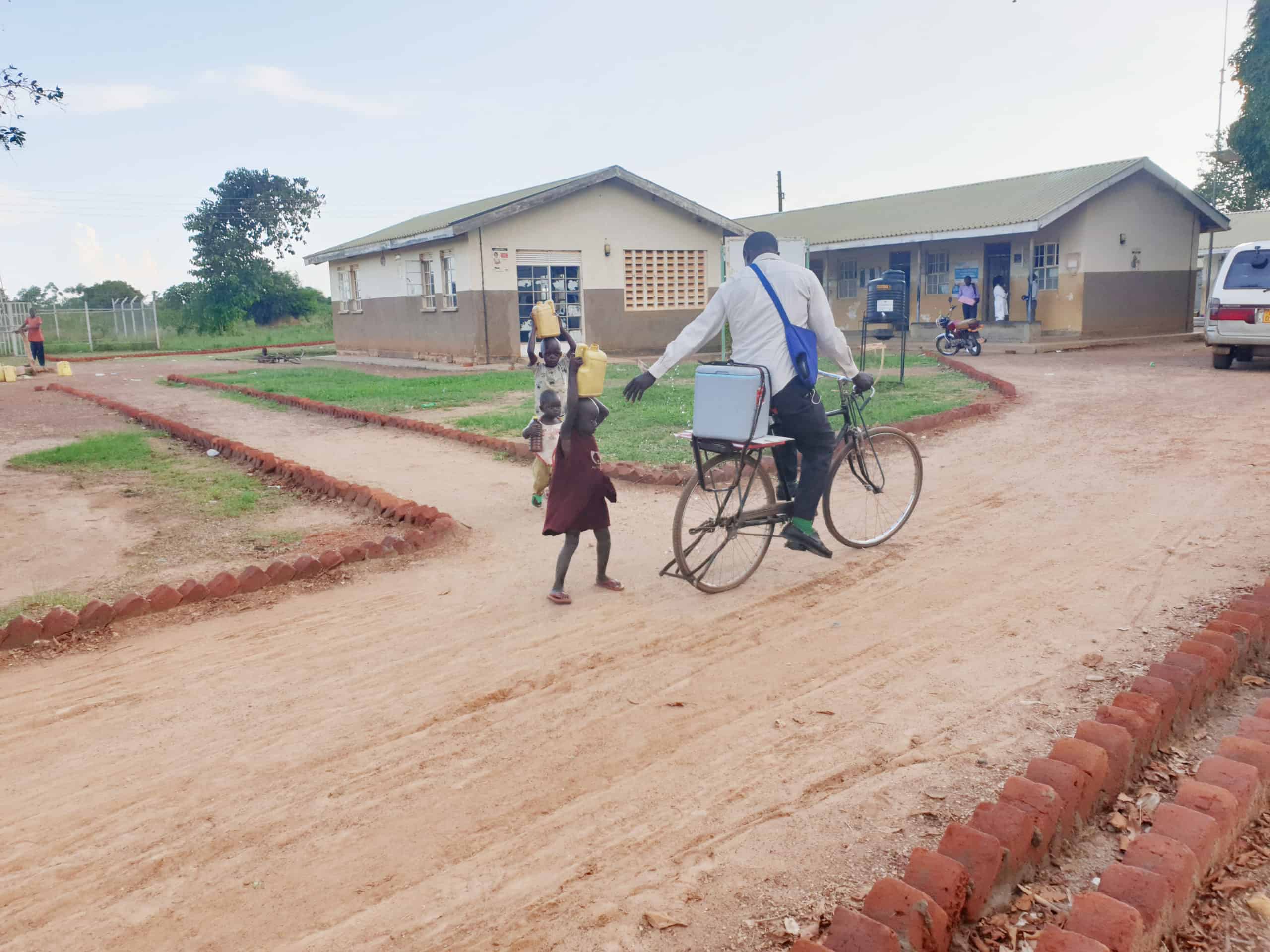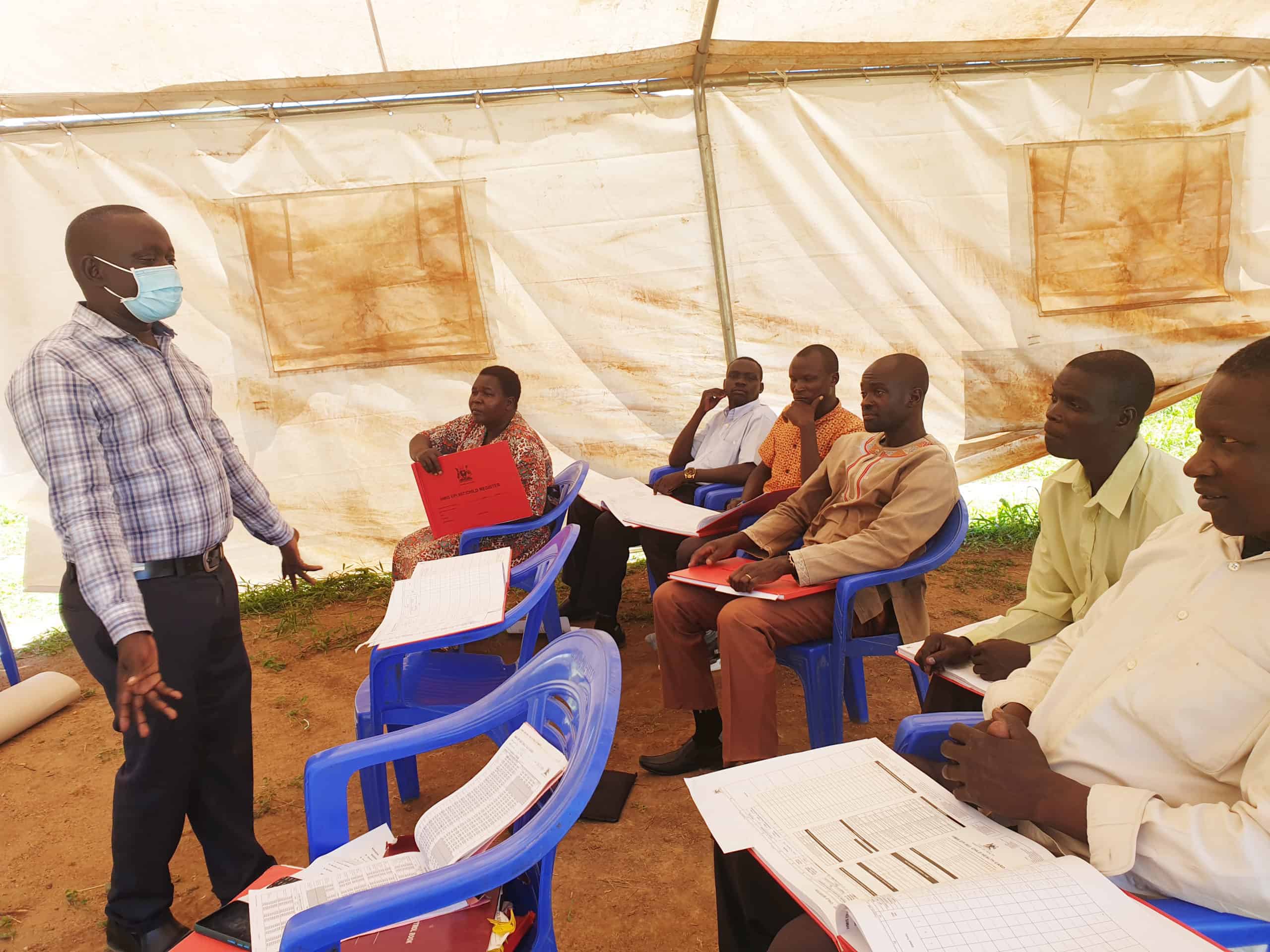28 years of Immunizing Children: The Story of a Community Vaccinator in Northern Uganda
December 8th, 2021 | story
His name is David Ojok, a 57-year-old community vaccinator and proud father of 14 immunized children. For 28 years, he has volunteered at Namasale Health Centre III in Amolator district of northern Uganda. It is here that he began talking to parents about the importance of immunizing their children.
“Along the way, I was shown how to do simple tasks like registering and giving drops and injections of vaccines. I got very motivated and excited,” David says.

David completed his formal education up to lower-secondary level, writes and speaks the local language fluently, and communicates fairly in English—all of which make him an excellent health facility/community liaison.
Namasale sub-county has a total of 53 villages. Just like other sub-counties in the district, its main economic activities are subsistence agriculture, animal husbandry, and commercial fishing. Before the sub-county’s two health centers were established, David participated in 14 community outreach sessions every month, advising parents of the vaccination location, picking up the vaccines from the health facility, and pedaling to each site. And he never missed a session.
“I was given a bicycle and would ride to the Amolatar trading center, about 22 kilometers from my home to pick up the vaccines in the morning and take them back after the session was done because we had no fridge for the vaccines at the facility when I started in 1993. Now, we have five outreach posts and fridges are available,” he says.
On a typical community immunization day, David arrives at the health facility by 7:00 in the morning, organizes vaccines and other supplies, and alerts the post mobilizers before riding to the scheduled immunization post.
There are plenty of challenges in this work. Because of the importance of commercial fishing in the sub-county, residents are always on the move looking for a good harvest. David explained that this makes it difficult to follow up with children who move with their parents from one post to another.
“I am now supporting the immunization focal person at the facility in registering children who have missed their appointments. I also participate in outreaches with my colleagues so that every child can get vaccinated at the nearest post.”

Immunization, which protects children from dying from preventable diseases before their first birthday, is one of the most successful and cost-effective public health interventions. Immunization is a priority in Uganda’s minimum health care package and directly contributes to the Ministry of Health’s goal of ensuring that every child is fully immunized with high-quality vaccines against the targeted diseases.
In the Lango sub-region of northern Uganda, USAID’s Regional Health Integration to Enhance Services-North, Lango (RHITES-N, Lango) project works with the Ministry of Health cadres (district and village health teams, health workers, and others) to ensure routine immunization services reach every child. Using community volunteers like David as vaccinators has increased reach and improved health outcomes.
David is one of 37 vaccinators who have been formally trained by the USAID RHITES-N, Lango project. Training includes mentorship on immunization practices, including vaccine handling, organizing immunization sessions, mobilization, keeping immunization records, and tracking missed vaccination opportunities in communities.
Amolatar District has improved immunization coverage due to this support.
The coverage of DPT 3 vaccination improved from 82 percent in June 2019 to 98.3 percent in July 2021. The drop-out rate by the end of July 2021 was at 7.4 percent, which is within the acceptable range.

In Lango sub-region, the proportion of children completing immunization by their first birthday in Lango improved from 72 percent in July 2019 to 85 percent in July 2021. This increase happened despite the disruption in access to and delivery of health services by the COVID-19 pandemic and the subsequent lockdown to contain it. And it is to a great extent attributed to the work of community vaccinators like David.
The community vaccinators have helped fill human resource gaps in facilities, which previously led to poor documentation and reporting of immunization activities. In a month, a vaccinator participates in five community outreaches and daily static immunization sessions at the health facility. They have become trusted members of their communities, which has helped increase the uptake of immunizations.
“I am now a friend to all the parents in this area because of my work in vaccination,” David says happily.
Written by Jasper Abor, Senior Program Officer
We strive to build lasting relationships to produce better health outcomes for all.